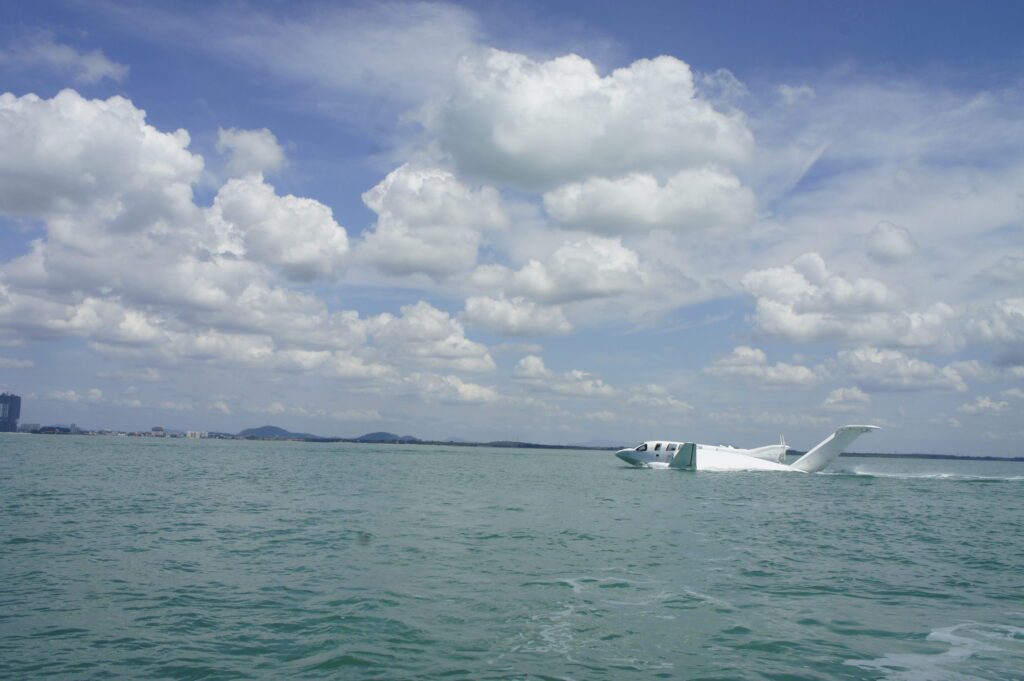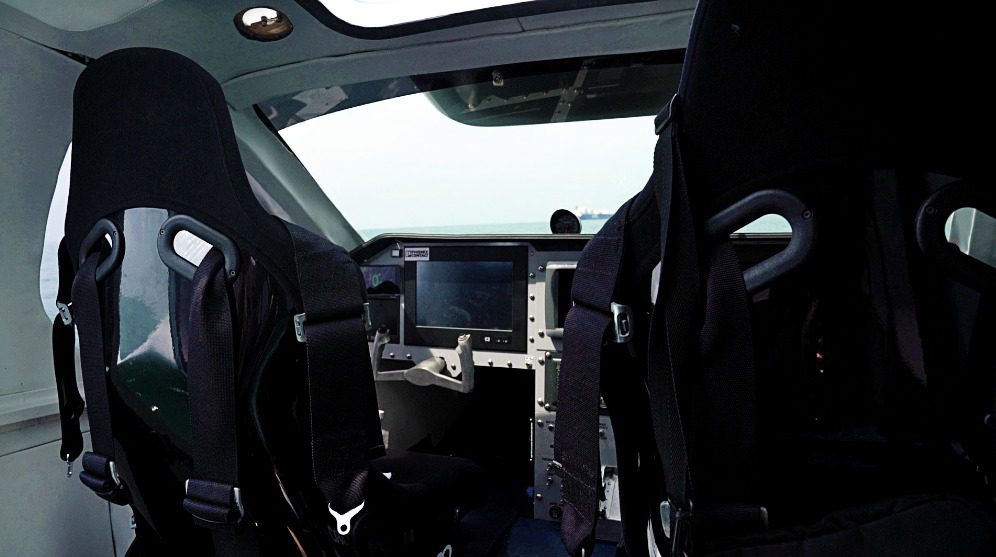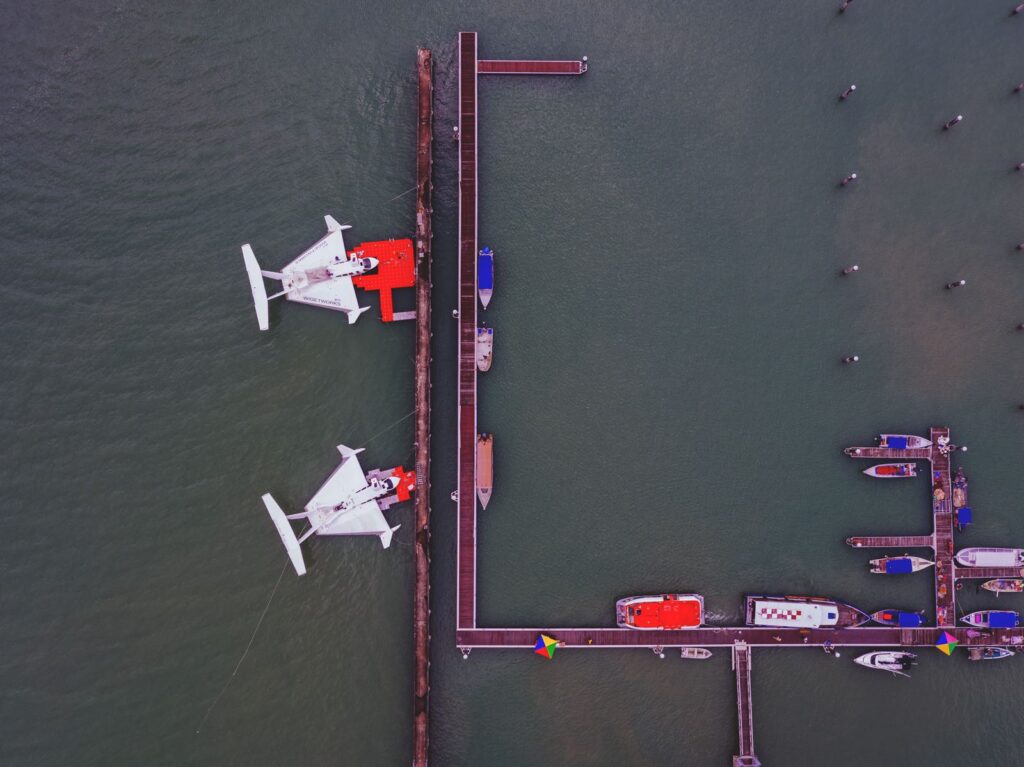The concept of hybrid vehicles- that is, vehicles with elements of two or more forms of transportation- have a certain novelty to them. Most cities with major bodies of water offer “duck boat” tours in buses that can enter the water. Seaplanes allow pilots to land and take off from water. The AirFish is just the latest in hybrid vehicle technology.

Created by Widgetworks, the AirFish 8 (AF8) is a wing-in-ground (WIG) marine craft. It has the buoyancy and guidelines of a boat, the wings of a plane, and the engine of a car. It can reach a top speed of 106 knots, making it much faster than many conventional boats of its size. The wings allow the craft to exploit what is known as ground effect.
Ground effect refers to the additional buoyancy created by the air below a vehicle when it is flying close to the ground. The decreased drag can give the pilot the sensation of floating while landing. Many large birds, like albatrosses, use it to conserve energy during flight. Indeed, the very first flight conducted by the Wright Brothers was done entirely with ground effect.
The AirFish uses ground effect in two ways: to increase speed while on the water, and to allow water landings/take-offs. It’s also designed to be berthed and even operated in shallow waters with minimal support, making access and maintenance easier. The wings themselves are based on the delta wing design of Dr. Alexander Martin Lippisch with a wingspan of 15 meters.
Unfortunately, those wings aren’t going to bring you up to jet plane level. The AirFish can travel seven meters above sea level. Still, for a vehicle powered by a V8 car engine, it’s a good height. The maximum distance it can travel without additional equipment is 300 nautical miles.

This isn’t just a first attempt, either- there’s a good deal of history in creating the AirFish. The Singapore-based company first acquired a prototype for the AirFish, known as the AF8-001, in the 1990s. It was originally designed and built by Airfoil Development before being transferred to Widgetworks. After the transfer, WW the prototype went nautical trials in both Singapore and Thailand. Eventually, it was accepted for Lloyd’s Register Class in April of 2010, being awarded later that year.
Both pre-production vessels have successfully completed test flights in the past few years, and the company is hoping to have the final design finished by the end of the year. While the exact date is unknown, many of the AirFish’s specifications are available online. For example, it requires two crew members to operate but can then allow up to eight additional passengers.
Widgetworks’ other main project is the AirFish 3, a two-seater WIG craft. According to their website, the AF3 is “capable of operating in ground effect at about 1 to 2 meters above water… [it is] highly manoeuvrable [sic] and easy to handle, making it an ideal recreational craft or use as a trainer for bigger WIG craft.” There are no current plans to make the AF3 commercially available.

The innovation of the AirFish 8 (and 3) isn’t hard to see. Being able to travel by both air and water in the same vehicle would make commercial flights for both cargo and people much easier. It’s also a new spin on leisure activities that is sure to entice many. But above all else, it’s improving upon techniques that are already proven to work. Ground effect is a powerful tool that is rarely used or exploited. Widgetworks is breathing new life into a natural concept and into a niche area of travel.
Influence the future and follow our World of Innovation.







